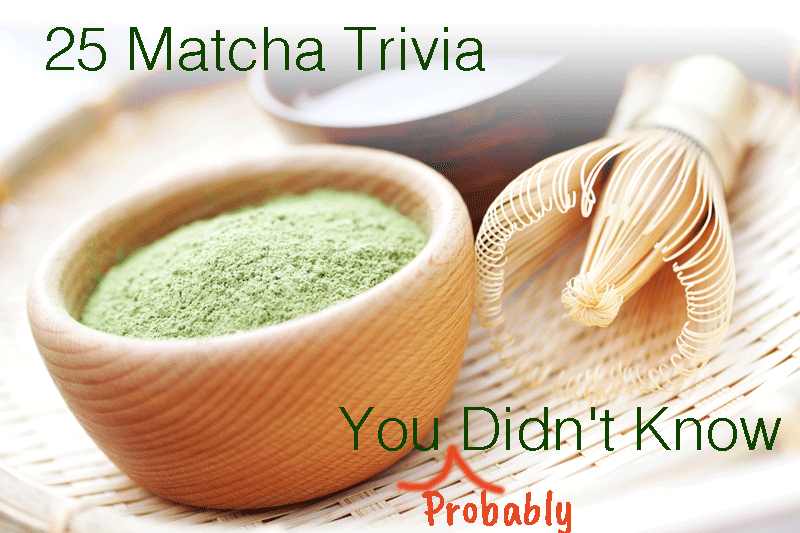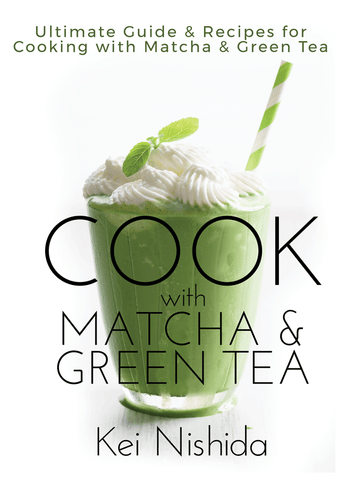Green Tea Science Part 3: Caffeine - Everything You Need to Know (and more) about Caffeine and Green Tea

This is part 3 of Green Tea Science series. In this article, I will answer 19 commonly asked questions about green tea and its element: Caffeine.
If you have not yet read the previous parts you can read:
Part 3 : Caffeine – Everything You Need to Know (and more) about Caffeine and Green Tea
- What is caffeine?
- Why does green tea have caffeine?
- Is the caffeine in green tea good or bad?
- How long does green tea caffeine last?
- Does caffeine in green tea help individuals lose weight?
- Does green tea without caffeine help with losing weight?
- How are caffeine levels being tested in tea?
- How much caffeine is in green tea?
- What determines lower or higher caffeine level on green tea?
- Are there green tea that are caffeine free?
- How to make green tea caffeine free?
- Is decaffeinated green tea as good as regular green tea?
- As part of decaffeination, does any other element get lost?
- Which type of green tea has the most caffeine?
- Compared to other tea, how much caffeine is in green tea?
- Compared to coffee how much caffeine is in green tea?
- What are the differences between drip coffee, espresso and green tea in terms of caffeine?
- Compared to coke, how much caffeine is in green tea?
- Compared to chocolate, how much caffeine is found in green tea?
- Where can I find low caffeine Japanese green tea?
- Where can I find high caffeine Japanese green tea?
- Is there naturally decaffeinated tea?

1. What is caffeine?
According to the National Library of Medicine, caffeine is a plant product that acts as a central nervous system stimulant. Caffeine can be found in plants grown in the wild. However, it can also be artificially created in a lab. As a central nervous system stimulant, caffeine affects our brains and our metabolism. It can increase our alertness but can also increase agitation. Caffeine has several other side effects, including: increased energy, increased blood pressure, increased urination, and heartburn. Too much caffeine can have additional side effects, such as dehydration, anxiety, dizziness and headaches. Despite these side effects, caffeine is regularly used by many people. When it is removed from plants, caffeine is a bitter, white, crystalline powder. When it hasn't been isolated or created in a lab, caffeine is a biochemical that occurs in plants such as green tea.
Back To Top
2. Why does green tea have caffeine?
Like many teas, green tea contains caffeine. It can be found in nearly sixty plants, including tea bushes that produce green tea. The science behind the creation of caffeine in plants is complicated. Scientists that study plants have found that caffeine, like the caffeine found in green tea, helps plants kill or disable bugs that want to eat the tea's leaves. Caffeine also helps plants outperform their neighbors and spread quickly. The amount of caffeine in a green tea plant before it is harvested depends on where the plant is grown, the soil quality, and how much sunlight the plant receives.
Back To Top
3. Is the caffeine in green tea good or bad?
Caffeine is naturally occurring in Green tea. As a result, green tea has positive and negative side effects that are associated with caffeine. Green tea increases mental alertness. Increased mental alertness is usually viewed as a positive side effect. However, there are side effects of consuming too much caffeine and therefore green tea. Unless it is decaffeinated, drinking too much green tea can lead to shaking, jitters, difficulty sleeping, and headaches. The Mayo Clinic found that an eight ounce serving of green tea typically contains between 25 and 29 milligrams of caffeine. They also point out that the amount of caffeine can be effected by the tea's origin, how it was processed, how it was prepared, and how long the tea was brewed. The Mayo Clinic suggests that consuming less than 400 milligrams of caffeine a day is usually safe for healthy adults. (400 milligram is about 16 cups of green tea)
Green tea contains another element called L-theanine (an amino acid). Combination of caffeine and L-theanine increases the ability to concentrate and provides a calming effect rather than creating a stimulant high. Studies have shown that green tea's combination of caffeine and L-theanine are potent in improving a person's brain function.
Back To Top
4. How long does green tea caffeine last?
Caffeine reaches its maximum effectiveness one hour after it is consumed. After this, the effects gradually wear away. It is important to note that an individual may still feel the effects of caffeine for up to six hours after it is consumed. This is true for caffeine found in green tea. Med-Health shared that caffeine has a half-life of five hours. This means that after drinking a cup of tea, small levels of caffeine will remain in the body for up to ten hours. How long caffeine remains in the body can be influenced by disease, medications, age, and pregnancy.
Back To Top
5. Does caffeine in green tea help individuals lose weight?
Green tea has many effects on the human metabolism. When unsweetened, green tea is used as a substitution for beverages with a higher calorie content, such as sodas or fruit drinks, the resulting decrease in caloric intake can assist weight loss. In other words, drinking green tea can help a person consume fewer calories. Some websites contribute the weight loss associated with green tea use to its low-calorie content, caffeine content and the presence of antioxidants. This calorie decrease can help promote weight loss.
The caffeine partners with flavonoids to enhance the natural metabolic rate. Green tea with caffeine improves insulin activity in the body, improves the oxidation of fat, and provides essential antioxidants to the body. One study conducted in 2005 found that caffeinated green tea was correlated with weight loss in test subjects who did not usually consume caffeine. In other words, green tea may assist with weight loss for individuals who do not currently consume caffeine on a regular basis.
Back To Top
6. Does green tea without caffeine help with losing weight?
Like caffeinated green tea, green tea without caffeine can contribute to weight loss due to its low calorie content. When used as a low-calorie alternative to other beverages, the decrease in total calories consumed can assist an individual in losing weight. Similar to its caffeinated counterpart, decaf green tea has antioxidants and other properties that are beneficial to its consumers.
Back To Top
7. How are caffeine levels being tested in tea?
Since caffeine levels vary greatly in green tea, it is important to measure caffeine levels. Unfortunately, measuring caffeine levels is complex and most easily performed in a lab. A 2009 study identified four ways to measure caffeine in a lab. The first two methods involve isolating the caffeine in a tea plant through the use of chloroform or a lead acetate solution. In both cases, substances were used to help extract the caffeine from the tea plants. The second two methods involved analyzing the chemical structures of the tea plants. Caffeine test strips exist, however, these kits are used to accurately identify the presence of caffeine. Therefore, they cannot be used to accurately measure the amount of caffeine in a cup of tea. Other websites enable users to look up specific beverages and teas in order to learn about their beverage's caffeine content.
Back To Top
8. How much caffeine is in green tea?
Depending on how someone makes their green tea can determine the type of caffeine it has. Brewed green tea, according to Mayo Clinic, has 20 - 29 milligrams of caffeine in an 8 ounce cup. Meanwhile, decaf green tea will have less caffeine in comparison to brewed green tea. However, this also varies depending on the brand of green tea one purchases. For instance, the Journal of Food Science evaluated how much caffeine different brands of green tea had. Various brands of green tea have different amounts of caffeine depending on how they're processed. Read onto next question about more about this topic.
Back To Top
9. What determines lower or higher caffeine level on green tea?
Different types of green teas have a different concentration of caffeine depending on how they're produced. There are different types of green teas: Bancha, Gyokuro, Hojicha, Sencha, and Matcha. There are more types of green teas, however, these are the most well known and major categories of green tea.
- The most common type of green tea available is sencha green tea. Sencha green tea has a moderate amount of caffeine and is made through the most common processing methods in which the leaves are steamed and rolled. This type of tea has about 20 mg of caffeine per 8 ounce cup.
- Similarly, Hojicha has the same amount of caffeine as Sencha.
- Bancha green tea has a lower amount of caffeine compared to sencha green tea. This is because bancha green teas use older leaves than sencha green tea. Bancha has about 10 mg of caffeine per 8 ounce cup.
- Gyokuro and matcha green tea have more caffeine than other types of green teas.
- Gyokuro green tea has more caffeine as its grown the longest under the shade. Twenty days before picking it for tea, the leaf is covered with a cloth to limit the sunlight it receives. The flavors in the green tea will become richer due to the increased chlorophyll. This is because there will be a reduction in photosynthesis, which will cause the leaf to have a brighter green color while changing the natural balance of caffeine, flavors and sugar in it. Gyokuro green tea contains around 35 milligrams of caffeine per 8 ounce cup.
- Matcha tea contains higher amount of caffeine per cup. The reason being that people are consuming the whole tea leaf. Matcha green tea is a tea leaf that is crushed into powder form. This makes matcha green tea one of the purest forms of tea in the world because of it being in its natural state. Matcha contains around 32mg of caffeine per 3.5 ounce cup. However, matcha green tea is the only type of tea that cannot be decaffeinated as it is a powder and a tea leaf in its purest form.
10. Are there green tea that are caffeine free?
Even when buying decaffeinated green tea, it isn't caffeine free because there will always be at least 2-4 milligrams of caffeine per ounce. No type of tea or coffee will ever be caffeine free. Decaffeinated drinks have less than 2.5% of their original caffeine levels.
11. How to make green tea caffeine free?
In order to make green tea caffeine free there are two ways to go about it. A tea needs to be in a rolled or crushed leaf form in order for it to be decaffeinated. It cannot be decaffeinated if its a powder like matcha.
- One way is to remove caffeine from green tea is by using a carbon dioxide method. In this method, the tea is cooked at a high pressure and temperature until carbon dioxide reaches a supercritical state.
- Then carbon dioxide becomes a solvent only attracting small caffeine molecules. Note how even despite cooking it at a high pressure and temperature, there will still be traces of caffeine. However, the taste of the green tea will remain because flavor molecules are larger than the caffeine molecules.
- Another way of removing caffeine is through water. In this process, the tea is soaked in hot water and then solution passed through a carbon filter. Once the solution is passed through, the water is placed where the remains of the tea was so it could reabsorb the flavors and oils.
12. Is decaffeinated green tea as good as regular green tea?
Although decaf green tea contains less caffeine than regular green tea, some might feel a difference in taste.
- Decaffeinating a green tea through the water method, people will claim that the tea is not as strong as they like. This will be due to the fact that water acts as a dilution for the tea.
- Some people might find that through either method of decaffeinating the tea, that the tea will never taste as good as the regular one.
- Tea and coffee are both decaffeinated using the same steps. Both can use carbon dioxide decaffeinating to lose the caffeine in it through cooking the coffee beans or tea leaves at a high pressure and temperature.
13. As part of decaffeination, does any other element get lost?
Each of the dilution processes, pose a problem for retaining the flavor of the green tea.
- For the method of water decaffeination, the flavors might seem diluted.
- A US Department of Agriculture study claims a third of the antioxidant properties in green tea will be lost in the process.
- Decaffeination also removes more than half of the catechins in the green tea.
- Catechins are the most active antioxidants in green tea. They're also the contributing factor as to how the green tea will taste and how strong it is.
Ultimately, decaffeinated green tea may have less caffeine in it but it also reduces the benefits of it. There are other brands of green tea which will contain less caffeine than others such as bancha green tea. With these options, people can shop for green teas that have less caffeine without it affecting the benefits the tea provides.
14. Which type of green tea has the most caffeine?
The caffeine levels in green tea largely depend on where the tea was sourced, what time of year it was grown, and how it was processed. The tea leaves gathered in the springtime produce tea with higher caffeine content because the plants have been hibernating all winter and collecting nutrients. In general, the tea exported from Japan has higher amounts of caffeine. Additionally, the caffeine content increases the longer the tea is brewed.
That said, in most cases matcha tea is found to have the highest amounts of caffeine. It is grown in Japan, ground into a fine powder and soaked in water before drinking. On average, matcha contains 32 milligrams of caffeine per eight ounces. The main reason matcha contains more caffeine than other green teas is due to the fact that you are ingesting the entire crushed tea leaf, and not just steeping a bag like with most teas.
15. Compared to other tea, how much caffeine is in green tea?
Green tea contains 20-35 milligrams of caffeine per eight ounces, depending on which type you choose and how long you allow it to brew. In terms of other tea varieties, green tea is a good middle ground in regards to caffeine content. Black tea and oolong tea generally contain more caffeine than green tea containing 25-45 milligrams. White tea has the lowest amount caffeine after green tea, with 10-30 milligrams of caffeine per eight ounces.
16. Compared to coffee how much caffeine is in green tea?
Coffee contains a significantly higher amount of caffeine than green tea. The average cup of coffee has about 100 to 200 mg of caffeine. That is over twice the amount of caffeine found in green tea.
Also, a 1 ounce shot of espresso has between 47 and 64 milligrams of caffeine, which can equate to almost two, 8-ounce cups of green tea. Though it has a higher concentration of caffeine per volume than coffee or tea, most espresso drinks only call for one shot or sometimes two. As such, even a double-shot of espresso would have roughly the equivalent of a cup of drip-coffee.
Green tea contains the amino acid L-theanine which most people find makes them feel alert but relaxed. So while these people are actually consuming less caffeine, they feel more refreshed and energized. Given the negative health risks associated with high levels of caffeine, green tea is viewed as a healthier option for those who still need a little kick to get them going during the day.
17. What are the differences between drip coffee, espresso and green tea in terms of caffeine?
The common belief is that espresso coffee contains more caffeine than a cup of drip coffee. Depending on how you look at it, this can be both correct and incorrect. One two ounce espresso shot has about 80 milligrams of caffeine, whereas 12 ounces of drip coffee contains 120 milligrams caffeine. So in this case, the cup of coffee will give you a bigger caffeine boost than a small shot of espresso. But if you evaluate in terms of volume, the espresso has the drip coffee beat. Espresso shots contain 40 milligrams of caffeine per ounce and a brewed cup only has around 10 milligrams in each ounce. So depending on how you view the situation, there is truth to both perspectives.
Comparatively, regular green tea contains 35 milligrams of caffeine in each eight ounce cup while 2 grams of matcha tea powder contains up to 70 milligrams when mixed with water. The volume of water the matcha soaked in does not affect the amount of caffeine.
18 Compared to coke, how much caffeine is in green tea?
An 8-ounce can or bottle of soda contains between 24 and 46 milligrams of caffeine, but soda is most commonly sold at supermarkets in 12 ounce bottles. According to the researchers at the University of Utah, a 12 ounce bottle of Coca-Cola Classic contains 34 milligrams of caffeine. This means that whether you're drinking 8 ounces or 12, one drink of Coke would be roughly equivalent to an 8 ounce cup of green tea.
19 Compared to chocolate, how much caffeine is found in green tea?
Like green tea, the amount of caffeine found in chocolate varies depending a variety of factors. These factors include but are not limited to: the percentage of cacao in each serving, location of growth, and which processing technique was used. On average, the cocoa bean contains between 0.1% and 0.7% caffeine. From this, cacao nuggets are made which contain slightly larger amount of caffeine.
Since dark chocolate contains large amounts of cacao, it generally has more caffeine than other types of chocolate. Milk chocolate with no cacao contains a very small amount of caffeine; in 20 grams, there is only four milligrams. Comparatively, 20 grams of dark chocolate with 70% cacao content contains about 28 milligrams of caffeine. Compare that to green tea and it seems most chocolate only contains trace amounts of caffeine. You would need to eat several servings of chocolate in order to ingest the amount of caffeine found in the average cup of green tea.
Back To Top
20 Where can I find low caffeine Japanese green tea?
There are Japanese green tea which are low in caffeine. These tea from JapaneseGreenTea.In are naturally low in caffeine.
Back To Top
21 Where can I find high caffeine Japanese green tea?
If you are looking for Japanese green tea which have higher in caffeine content, you want to try out matcha, gyokuro or covered tea. When these tea are covered before harvesting, level of caffeine increases; therefore, they have higher caffeine then other type of green tea.
22 Is there naturally decaffeinated tea?
In November 2018, the Journal of Agricultural and Food Chemistry announced the findings discovered by a Chinese team of scientists about a plant called Hongyacha, a naturally decaffeinated Camellia sinensis plant. This plant contains very little or no caffeine.
This Hongyancha is found only in few areas in the region of southern China's Fujan province with elevation of 2,300 – 3,275 feet (or 700 - 1000 meters). This plant is the result of a genetic mutation of a tea plant which could have happened millions of years ago.
As of December of 2018, this tea is not yet available to the general public since the discovery was made in November of 2018.
If you like this post, you make also enjoy my book
I Will Teach You How to be Healthy by Drinking Using Japanese Green Tea: Surprising Facts and Tips for How You can Take Best Advantage of This Amazing Plant ( ISBN-13: 978-1541252455 ISBN-10: 1541252454)
Related Articles You May Be Interested In
Get Free Download
If you have ever thought that Green Tea is an ìacquired tasteî or that it is ìtoo bitterî to enjoy, weíre here to change your mind! We want everyone to experience the health benefits of Green Tea and show you that this can be an amazing, refreshing, and delicious drink when made correctly. With just a few tips on how to brew this powerful leaf, we can change your mind about the taste and enjoyment of drinking Green Tea.
Donít miss out on the health benefits of tea!
- Improve health
- Increase brain function
- Regulate weight
- Lower your risk of cancers
- Reduce risk of heart disease
- Lowers risk of diabetes
We know that you will love this tips to brewing tea and getting the most flavor and elegance out of every cup. Sign up for our newsletter and get this great informative manual on brewing green tea. You will learn what it is that makes it one of the most popular beverages in the world.
The E-Book also includes the chapter of Kei Nishida's book, "Art of Brewing Japanese Green Tea" where he teaches you how to brew hot and cold Japanese Green Tea.
Also in Japanese Green Tea Lovers in India
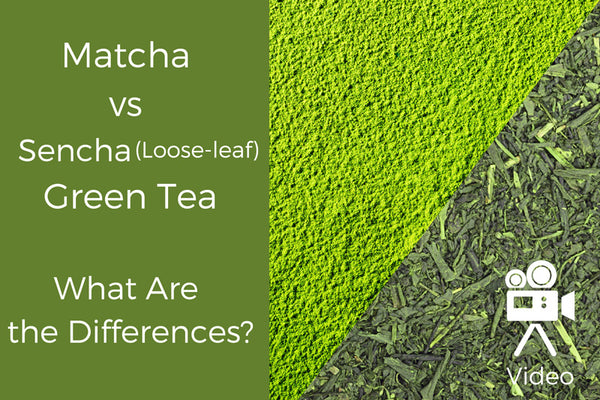
TYPES OF TEA: MATCHA VS SENCHA GREEN TEA: WHAT ARE THE DIFFERENCES?
When it comes to different types of tea, matcha and sencha green tea are two many people have questions about! Get answers in this post.
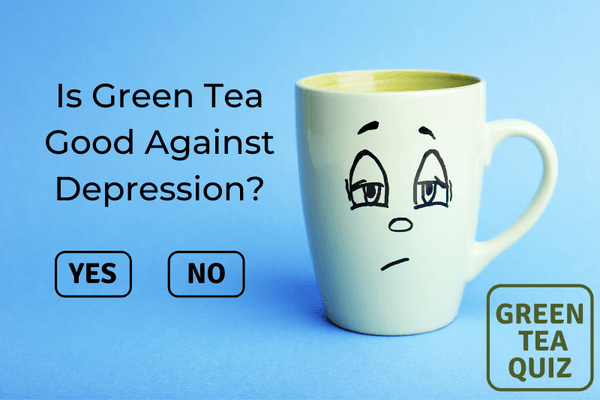
Is Green Tea Good Against Depression?
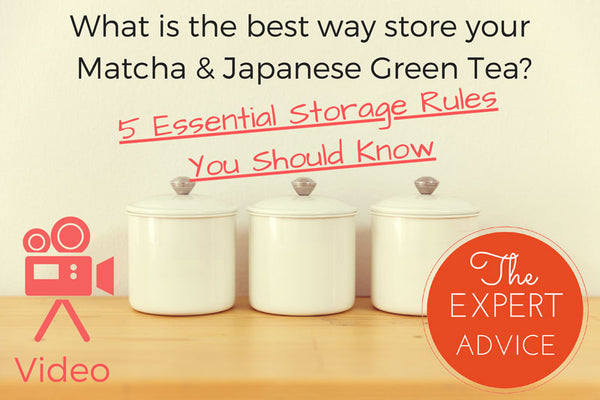
What is the best way to store your matcha & Japanese green tea?
5 Essential Storage Rules for Matcha and Japanese Green Tea
Read on to learn how to store matcha the proper way to ensure that you get the most out of this ancient elixir.





